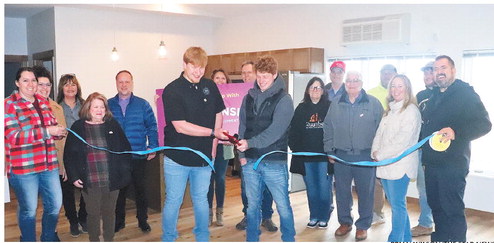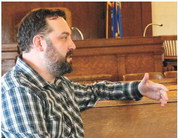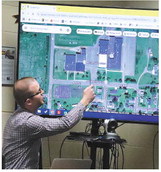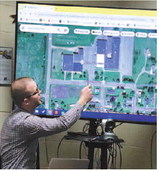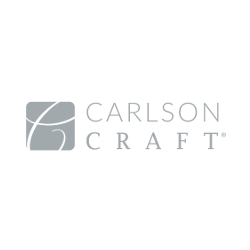Finishing in the black
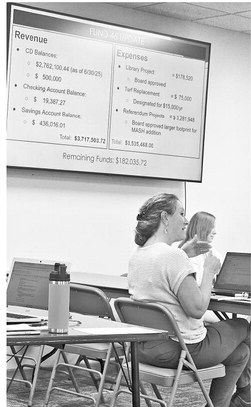

Being the home base of the largest K-12 virtual charter school in the state continues to pay dividends for the Medford Area Public School (MAPS) District.
At Monday’s school board meeting, district finance director Audra Brooks reported the district ended the year $2,621,900 above budget.
She explained that a large portion of that amount was tied directly to savings and additional revenue from the Rural Virtual Academy (RVA).
On the savings side, the district had $700,000 less than budgeted for transfers into the RVA. On the income side, the district saw $399,500 in revenue from open enrollments into the district for students attending the RVA.
Brooks praised RVA administrator Charlie Heckel and his staff for being diligent on working to fill any vacant spots in the RVA. The RVA maintains a waiting list of students wanting to enroll and as students or families leave the RVA, the spots are quickly filled up. “As soon as a student is exiting, they are already getting the next student in,” Brooks said.
Unlike traditional schools who are counted twice a year for enrollment, virtual charter schools like RVA report daily enrollment numbers to the state. The annual transfer from the RVA to MAPS occurs in June after the open enrollment numbers for the year are finalized.
Brooks noted the school district’s operational budgets for buildings and instruction came in close to budget. It was the RVA as well as other some other additional revenues and areas of savings which boosted the district’s bottom line.
The district saw a $500,000 savings in planned spending for special education as the cost of services came in less than anticipated. The district saw unexpected savings in wages and benefits of $300,000. At the finance meeting before the regular board meeting, Brooks explained that this was largely due to being unable to fill some positions. In addition, with the change to district’s health insurance that took place last January, there were some employees who chose to go off the district’s health insurance. About $50,000 of this savings was due to shifting some of the custodial wages from general operations into the food service balance.
She explained that the district did a time study of the custodial staff and were able to determine the amount of time spent cleaning the cafeteria areas and charge this to the food service account. The district has a sizable fund balance in the food service account, but is hampered by state regulations on how that money may be spent.
The district also saw a savings of $210,000 in transportation. Brooks explained that this is impacted by travel of sports, school trips and extracurricular activities and can vary greatly year-to-year.
All of these combined for $1,750,000 in savings from last year’s budget.
On the revenue side, the district also got a boost, in addition to the open enrollment revenue, the district received additional mental health aids of $54,000 and an additional $118,000 in Medicaid reimbursements for providing services such as occupational therapy to qualified students. The district also saw a $30,000 payment from the city of Medford due to the closure of a tax incremental district the year before and $93,000 in interest earned on school district funds. Combined the district saw additional revenues totaling $694,500.
Taken together, this is the source of the $2,621,900 in surplus.
With the fund balance, the question Brooks asked the board is how they want to spend that to maximize state aids and look for the future needs of the district. There were three options for the district to use the funds. The first is to put a portion into the trust fund for post retirement benefits. This fund pays for a portion of employees’ healthcare after they retire.
Any actuarial study done every other year shows the amount the district needs to put into the trust fund in order to meet the obligations from it. While the study assumes every eligible employee will stay to retirement, the reality is that there are some who leave sooner and do not receive the benefit. The district has also changed the post retirement benefit so there are no new staff members qualifying for the program so over time the district’s obligation to put money into it will go down.
While the district could have put in the full $436,676 maximum into the account, once the money is in the trust fund it cannot be used for other purposes. Instead, board members opted to follow the finance committee recommendation and put $297,454 into the Other Post Employment Benefits (OPEB) trust.
In addition to OPEB, the board approved putting $1.7 million of the carryover into Fund 46. This is the district’s savings account for long-term maintenance projects. The benefit of putting money into Fund 46 is that it counts for state aid in the year it is put into savings. The intent is to save up and pay for projects over time rather than having to raise taxes or borrow for them.
Board member Steve Deml supported putting the large amount in Fund 46 noting that prior to the most recent referendum vote, citizen voiced the need for the district to save for expected projects. Brooks said one of the advantages of the Fund 46 being past its 5-year set up period is that the district could put money into it one day and spend it another, as maintenance needs come up.
The remaining funds will go into the district’s fund balance. This is the general savings of the district, which is also used to assist with cash flow throughout the year. A higher fund balance reduces the need for short-term borrowing between the district receiving property taxes and state aid payments.
Approximately $620,000 will be added to the fund balance which she said will put the district’s fund balance at between 20% and 22% of the total budget. “It really does help us with short term borrowing throughout the year,” Brooks said of the need to keep a strong fund balance.
During the regular board meeting, Brooks also updated the board on changes with the state budget being passed.
Medford is coming out a definite winner with the increase in money going toward open enrollments. The district will receive additional money each year for every student coming into the district. The immediate impact of this will be to close, what had been a lingering projected deficit in the district’s 2025-2026 budget and bring it into balance.
On the negative side there was no increase in categorical aid in the budget. The district has the ability to increase per pupil spending by $325 each year, but the total amount of this increase will come from local property tax dollars.
Board member Don Everhard questioned if the district needed to increase per pupil spending.
“Do we need to increase $325 or is it just because we can?” he asked.
Board member John Zuleger noted that it would go toward things like needing to pay for increases to health insurance for the district. At current enrollment the amount of new revenue that would be generated would be over a half million dollars.
“We do what we can with what we have,” Brooks said. Everhard noted the district passed a referendum and people’s taxes increased and they are not going to be happy with additional increases. The district’s annual meeting will be held in September and the budget will be approved then.
In other business, board members:
• Received an update on the construction project. Utilities are in the process of being relocated and bids will be going out later this week for the major high school projects. The intent is to have a groundbreaking at the high school during the first week of the school year.
• Formally adopted the academic standards used by the district. Wisconsin law requires boards to go on record each year and state the standards they follow.
• Received an update on changes in food service as federal requirements continue to shift to reduce the amount of added sugar in student meals and the implementation of requiring additional whole grains and protein particularly in breakfasts. The new standards have been in place for a year, but are being implemented now. The delay was to give food providers the opportunity to adjust their product recipes.

